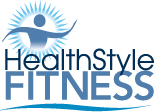What to Do When Fat Loss is Slow ...
Brian Calkins - NSCA-CPT, ACE | Cincinnati, Ohio
In order to lose excess body fat, we need to combine (1) eating in a manner that allows the body to reduce fat while maintaining daily energy requirements, (2) a blend of steady state and interval cardio training and (3) a consistent pursuit of developing lean muscle tissue. There are a lot of details that we could expound upon, but for this article, let’s assume we’re on the right track with our nutrition and exercise.
Some people drop the pounds relatively quickly when they incorporate proper eating and exercise. Others seem to lose more slowly. Hey, we need to face reality; we’re all different and will respond differently to the same lifestyle changes.
But just because we might “lose” slower than our friend or spouse, we need to remember that we ARE making progress. Almost everyone focuses primarily on the aesthetic change – how you look. In addition to how your body looks, eating right and consistent exercise improves your energy, reduces your stress and back pain, improves your mental outlook. There are way too many benefits for this short article (to read the benefits known by science click here).
But since nearly everyone who starts a healthy nutrition and fitness program wants to look better (and I don’t blame you), here’s what we need to know.
We store body fat in essentially 3 places – under the skin (subcutaneous fat), within our muscles (intramuscular fat), and around our organs (visceral fat). Although research isn’t yet 100% definitive, studies suggest that we tend to lose fat first in muscle. Although fat loss is fat loss, sometimes a new exerciser becomes disappointed when the fat that she can pinch and pull (subcutaneous) doesn’t seem to be decreasing. And when you combine that with a lack of perceived dropping of pounds on the scale (go to Throw Away Your Scale), she’s ready to give up after only a few weeks of exercise. Don’t quit. You’re on the right track. As the intramuscular fat reduces, the subcutaneous fat (under the skin) reduction will follow.
If you perceive you’re not losing, change your standard of measurement. Body composition is the gold standard in terms of measuring change over time. Taking circumference measurements can also give you a relative good gauge of your progress. You’re clothing will fit better in due time.
Instead of focusing on the numbers (lost), focus on the behaviors that ultimately lead to your ideal body shape and all the wonderful benefits of great health and fitness. For example, if you have four workouts planned for the week, allow that to be your gauge of progress rather than a scale number or other measurement. Consistent follow through using the right approach will surely allow you to achieve your goals.
And remember, this article makes the assumption you are doing everything right from a nutrition and exercise standpoint. With all the misinformation that abounds on fitness and nutrition, it’s not a bad idea to check yourself against the pitfalls that sometimes well intentioned exercise enthusiasts fall prey to – to review these click here.
Okay, armed with this information, let’s get to it!
Your friend in fitness,
Brian Calkins



